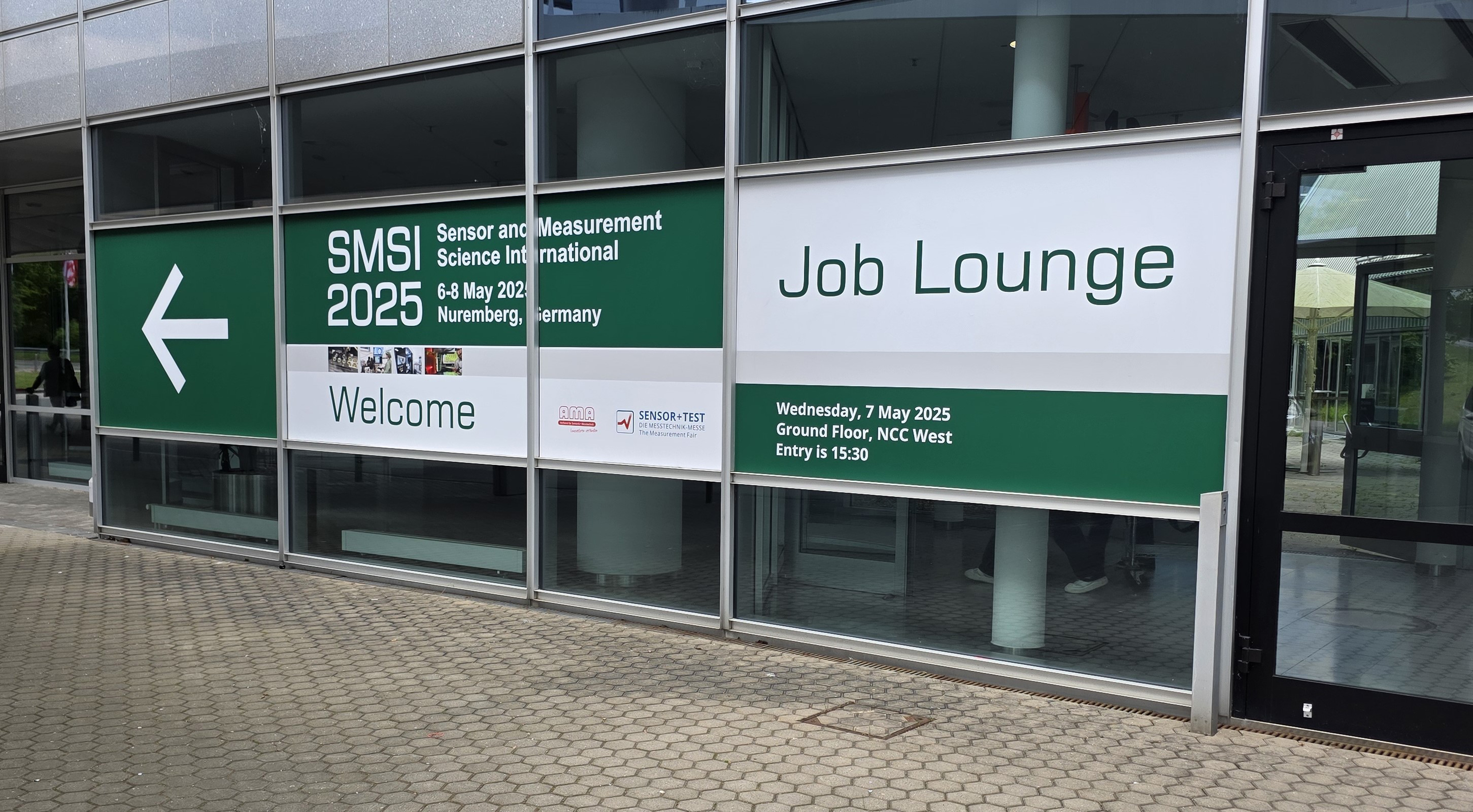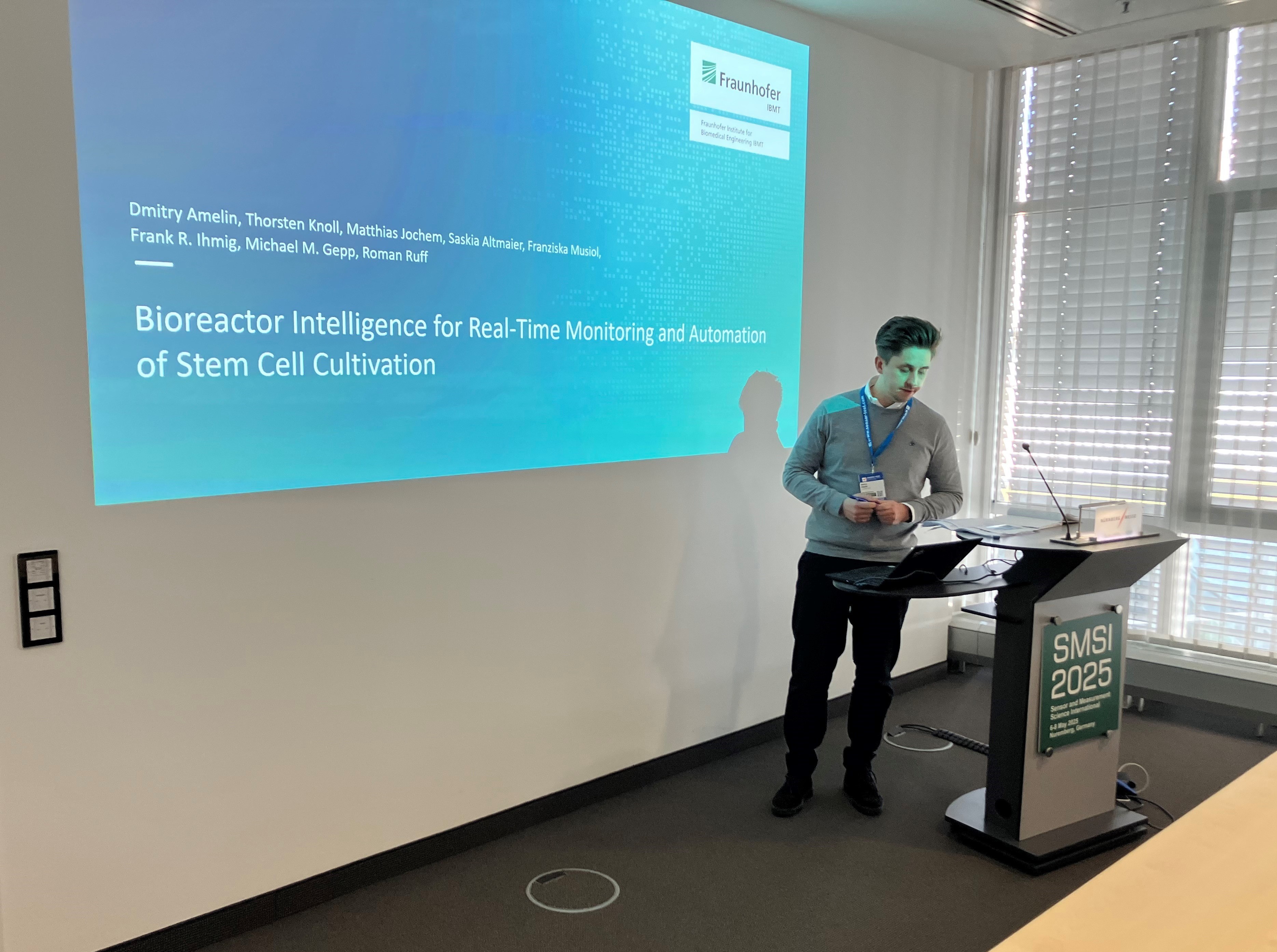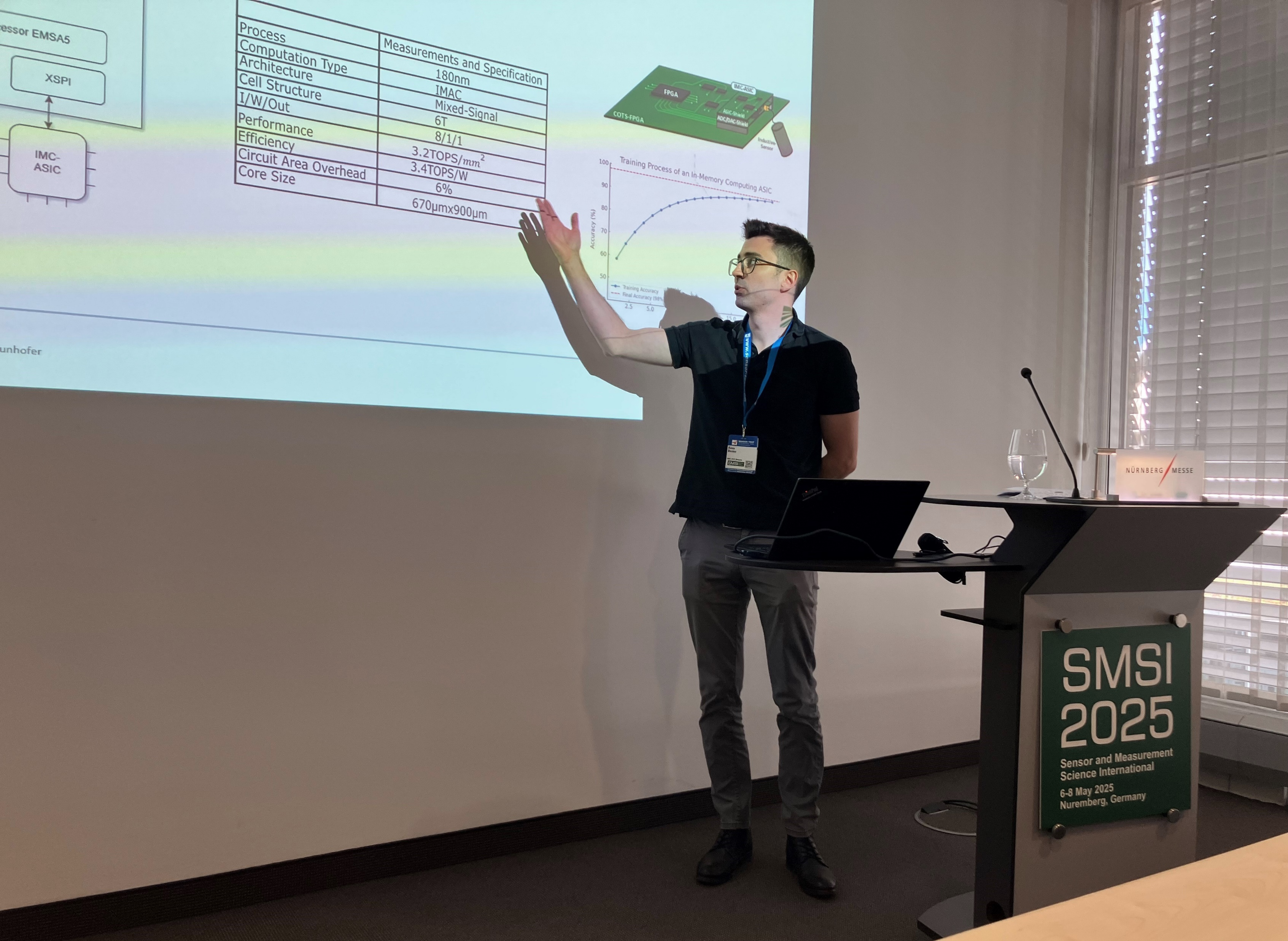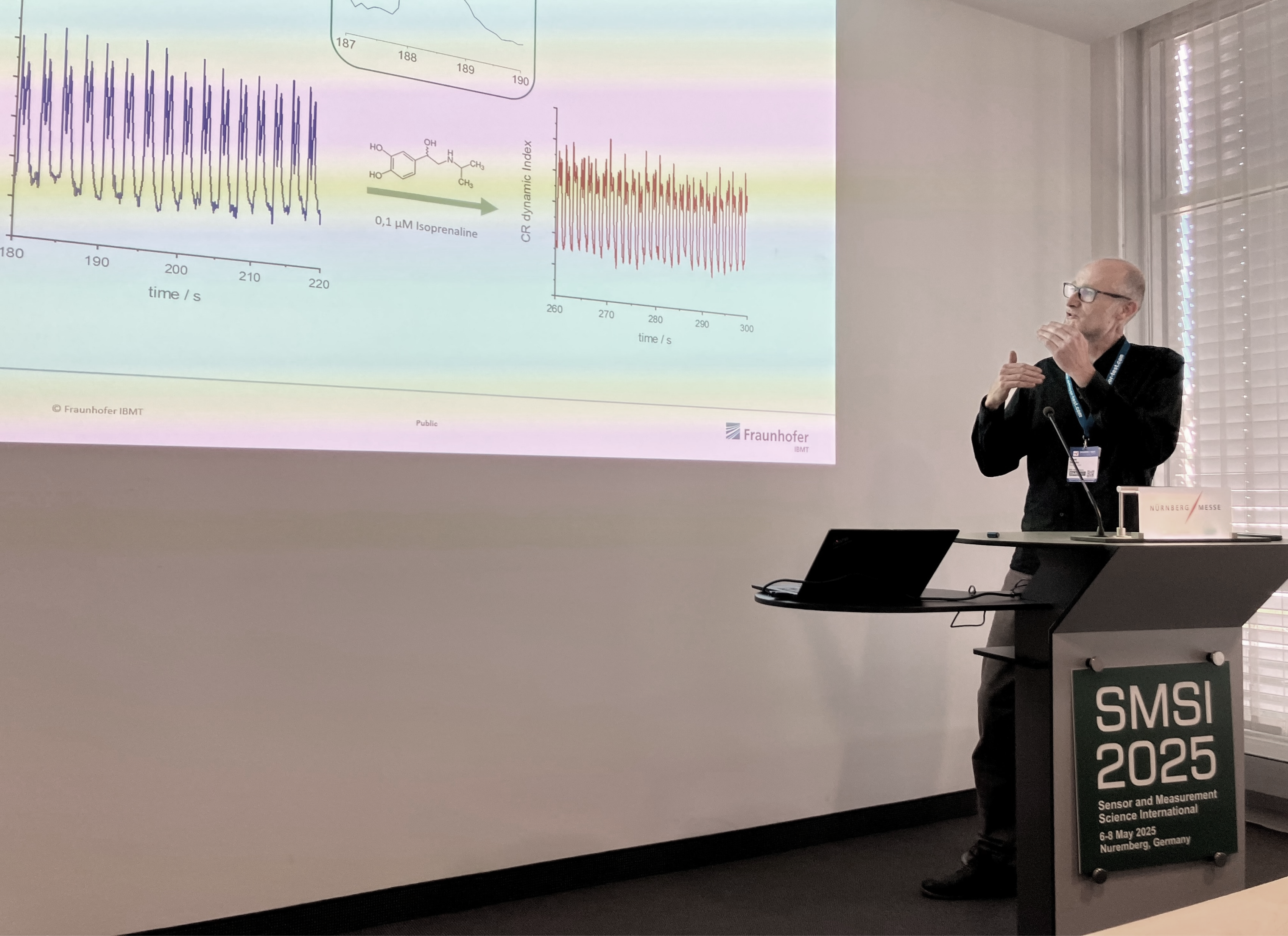Fraunhofer ZSI @ SMSI 2025
Fraunhofer ZSI with its own series of lectures at “Sensor and Measurement Science International”
As part of the international conference “Sensor and Measurement Science International” (SMSI) 2025, which took place from May 6 to 8, 2025, in Nuremberg, the Fraunhofer Center for Sensor Intelligence ZSI organized its own series of lectures entitled “Sensor Intelligence: Devices and Applications.”
The session was chaired by Dr. Thomas Velten, who began with an overview of the Fraunhofer Center for Sensor Intelligence ZSI. This was followed by four presentations on research results from pioneering Fraunhofer ZSI projects covering technical and biomedical applications.
Kevin Becker and Prof. Hans-Georg Herrmann spoke about “Sensor Intelligence Devices for Optimized Condition and Process Monitoring” and provided an understanding of the importance and range of applications of sensor intelligence devices. They also presented an ASIC they developed that enables particularly energy-efficient use of artificial intelligence through in-memory computing.
Dmitry Amelin explained how sensor intelligence devices can be used to monitor and automate the production of 3D cell culture systems, which offer a more realistic environment for in vitro research and testing than the mono layers of 2D cultures. With sensor-based information on both the process parameters and the quality characteristics of 3D cell organoids and a suitable AI model, it will be possible in the future to produce organoids of consistent quality by automatically adjusting the process parameters.
Dr. Frank Stracke presented an optical sensor system that can simultaneously record the contractions of 3D heart muscle cell organoids in 96 wells of a microtiter plate in real time. This represents a valuable test system for the pharmaceutical industry to detect the influence of drug candidates on the heart rate at an early stage of drug development in high throughput. In addition to the functional principle of the optical measurement system, he presented results from validation experiments with various active substances such as isoprenaline, a pharmacological agent used to increase the heart rate.
Kevin Becker and Dr. Samuel Klein presented a sensor intelligence device that can be used for condition monitoring in the context of predictive maintenance. The focus was on the effective monitoring of outdated infrastructure in terms of safety, sustainability, and cost-effectiveness. Challenges such as power supply, communication, data volume, and interpretation were addressed. The multimodal, self-sufficient sensor platform “MAUS” supports various energy sources, communication methods, and sensors. Its use was demonstrated using the example of stationary and mobile (drone-based) ultrasonic testing of critical structures such as pipelines and wind turbines, as well as road monitoring with vibration, camera, and environmental sensors.



